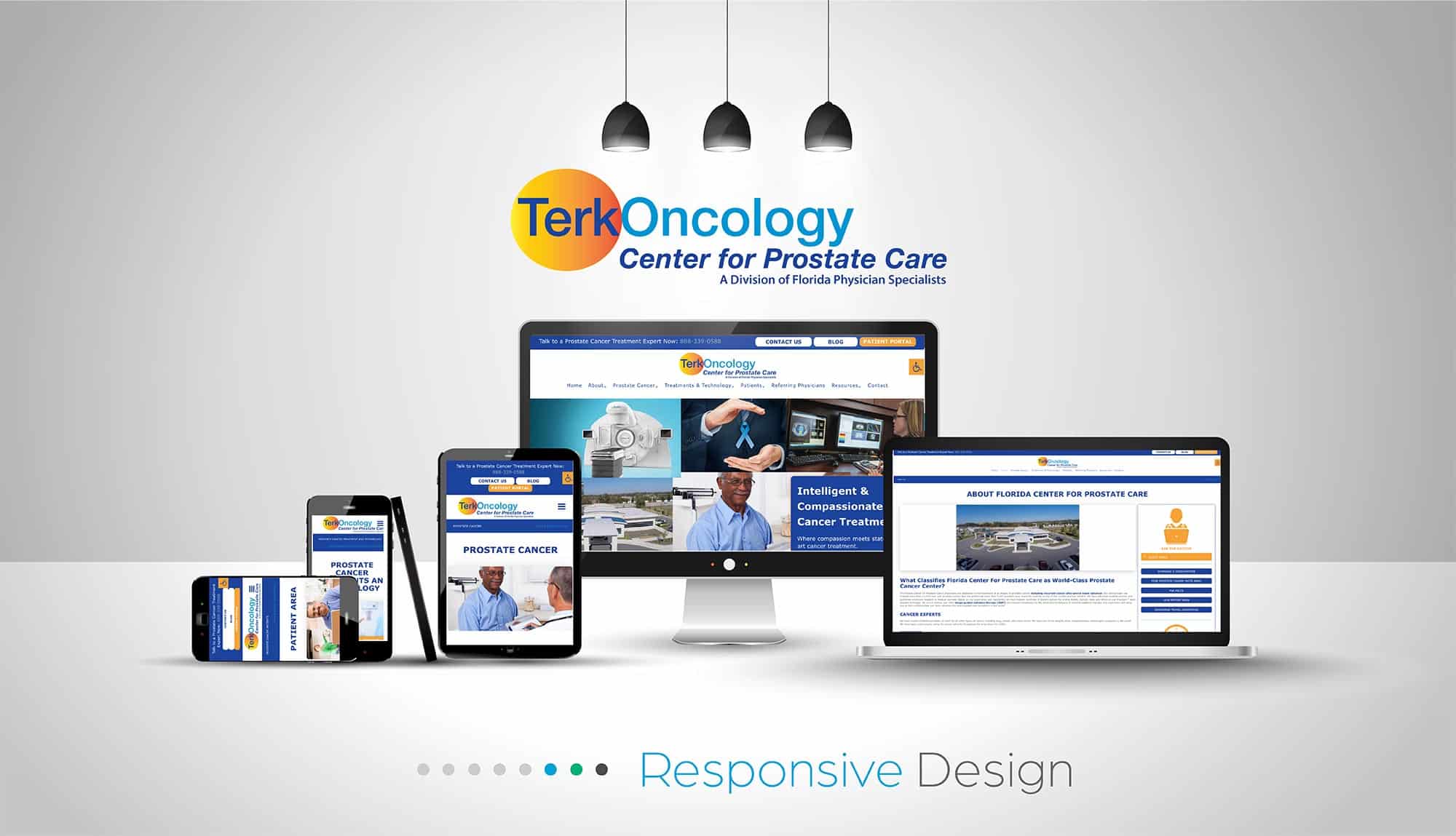[ our roles ]
[ compliance & references ]
All patient-data workflows were built to exceed the latest HIPAA Privacy & Security standards, while our content strategy references trusted medical authorities such as the American Cancer Society’s prostate-cancer guidance.
[ approach ]
1. Platform Leap: We migrated 40+ legacy pages from a non-responsive Web.com instance to WordPress 6, adding a global SSL certificate and hardened PHP stack.
2. Always-On Engagement: A right-column “Ask the Doctor” form and sticky quick-nav buttons appear on every page, letting visitors connect—even after hours—without hunting for contact info.
3. Accessibility by Design: Typography is oversized and line-height generous, images are enlarged, and each page auto-formats for print so patients can review treatment options offline.
4. Authority Amplified: Dedicated sections spotlight Drs. Terk and Cesaretti’s latest awards, plus state-of-the-art equipment photos that we refresh quarterly.
[ virtual ]
All project phases—IA workshops, wireframes, HIPAA reviews—were executed remotely between Jacksonville and Palm Coast via email & texts.
[ impact ]
-
- Significant increase in appointment requests in the first 90 days
- Mobile bounce rate has reduced dramatically
- LCP 1.8 s, CLS 0.06 (mobile)
- 9 websites now managed for the Terk Oncology network
Ready for a patient-first site of your own? Explore our full-service marketing & web design solutions to see how we can elevate your practice.
[ faqs ]
What makes a medical website HIPAA-compliant?
A successful Medical Website Design must encrypt all PHI in transit (SSL/TLS), store submissions in a HIPAA-ready database or BAA-backed form tool, and limit admin‐panel access via role-based permissions and 2-factor authentication.
Why is responsive design critical for healthcare sites?
More than 60 % of health searches happen on mobile devices; a responsive layout ensures seniors and caregivers can book appointments or read treatment info without pinching and zooming—improving SEO and ADA accessibility scores.
How long does a typical medical website project take?
For most small practices, 8–12 weeks covers discovery, UX wireframes, WordPress build, HIPAA compliance reviews, and launch. Enterprise networks may require phased rollouts over 4–6 months.
Can we balance detailed clinical data with quick summaries?
Yes—use expandable sections, bullet-point “key facts,” and printable PDFs so visitors can skim or deep-dive. FloridaProstate.com’s enlarged fonts and right-column quick-nav let users choose their own depth of information.




